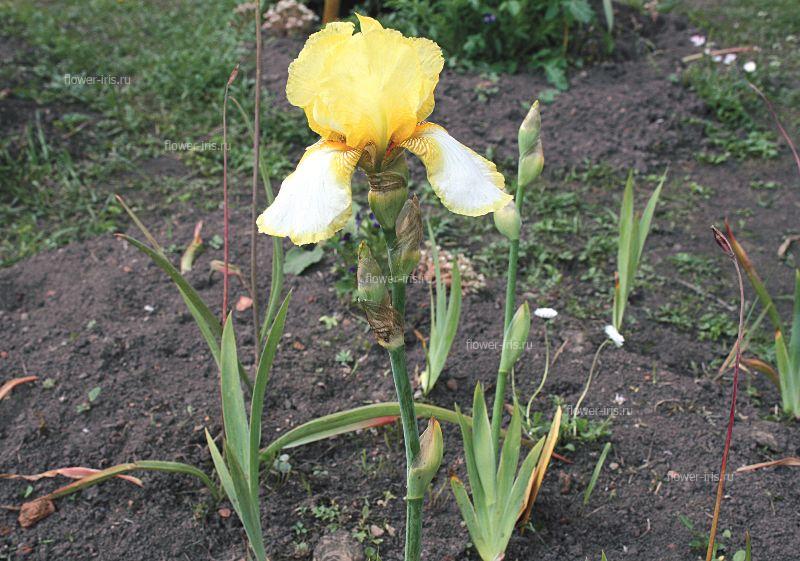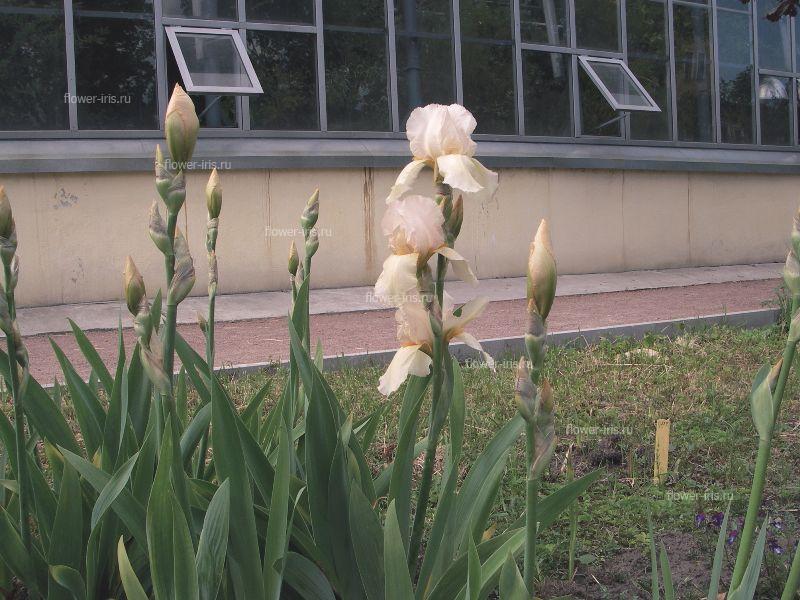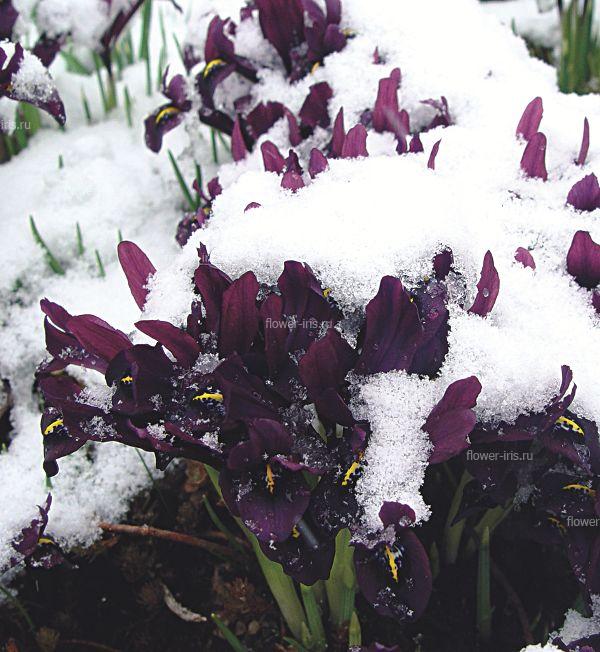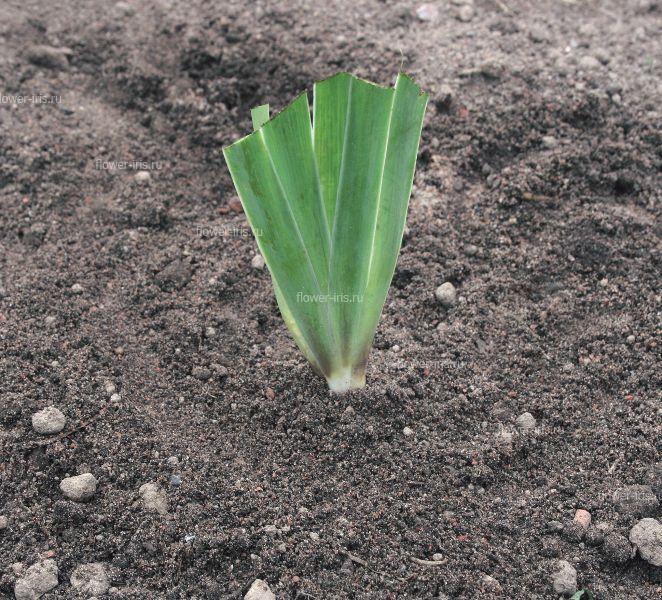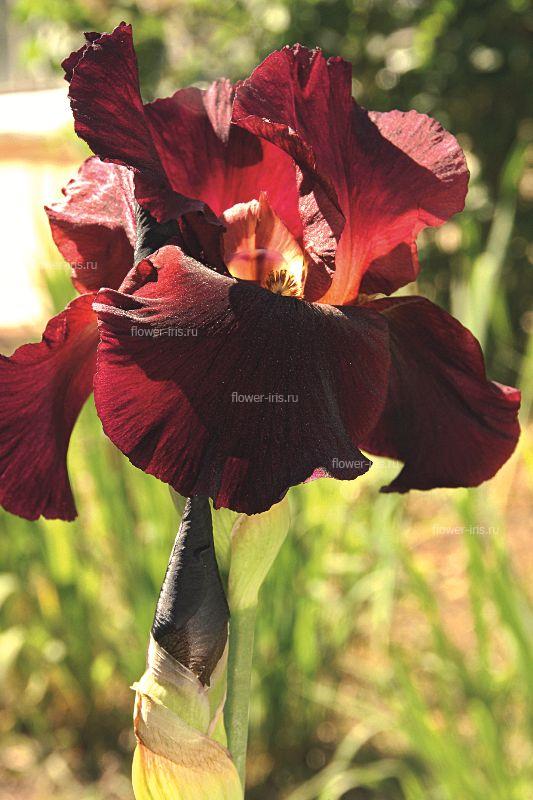|
News Camellian readings in St.Petersburg Photo Gallery |
CultivateHomepage → Books on Iridarium (Iris Garden) → Look in the book → Cultivate
Introduction
Create iridariya Family Iridaceae Bulbotubers Bulbous Rhizomatous Genus Iris Subgenus Iris Subgenus Limniris Subgenus Eremiris Subgenus Xyridion Subgenus Tenuifolia Genus Pardanthopsis The exhibition "Iris Russia" Exposure Iris garden Cultivate Insect Pests and diseases of Irises Literature The translation is done through the service translate.google.com. Advice on farming techniques, the data in this edition, focus on the North-West of the European part of Russia. The paper used the personal experience of the author, literature on nutrition and fertilizer ornamentals (Sharon, 1958; Mantrov, 1973 Amehin, 1985 Alekseev Zeksel, 1987 Rodionenko, Tikhonov, 1995; Rodionenko, 2002; Hondyrev, 2002; Tkachenko Reynvald, 2004), as well as records of the work diary AN Zeksel. Tuber bulbous IridaceaeAccording to the method of growing plants klubnelukovichnyh most similar to the well known gladioli. Spring, in May and June corms planted in open ground in the heated soil, in the autumn of their dug, dried and stored indoors at a temperature of 5-7 ° C. Winter without shelter only saffron corms. Planting corms produced in June, after a warm soil to 10 ° C. Planting depth of 8-10 cm for planting fertilized and plants are particularly lack of nitrogen and potassium. Fertilizers are applied in layers, nitrogen and potassium (1:1) surface - 8-12 cm, nitrogen and phosphorus - to a depth of 20-30 cm (1-1). During the growing season requires irrigation. To get an early flowering, increasing the length of the inflorescence and flowers, as well as to increase the yield of corm, a differentiated feed. In the phase 3-4-leaf made only nitrogen, 5-6th - nitrogen with potassium. During budding, - nitrogen, phosphorus and potassium. At the beginning of flowering - phosphorus and potassium. The dosage of fertilizer depends on the soil and the presence in it of nutrients. The best is a combination of substances N: P: K = 0.5:1:1 (27-30 g per 1 m2). Before frosts plants should be removed to the premises. Dug corms 5-7 days intensively dried at a temperature of 25-30 ° C, and then for a month - in a room with a temperature of 18-20 ° C and then stored at a temperature of 5-10 ° C and 80% relative humidity. Tigridia culture has much in common with the methods of cultivation and atsidantery gladiolus, but she has its own features. Corm Tigrid quickly releases moisture and dries, so keep it with a lump of earth or sand. Late autumn until the frosts, the plants should be removed in a bright room. Tigridia dig a lump of earth, put in large containers and watered abundantly. Later watered every 10 days for 6 weeks, then once a month. In January-February, cut the stems and leaves, leaving 10 cm of hemp, watering stop. The room temperature should be 4-5 ° C. In the second half of March, you can start watering or to parse corms, placing each in a peat pot. In June, after a night of frost, when the soil has warmed up to 10 ° C, Tigridia newly planted in open ground. Triton culture similar to gladioli, they differ from the last big winter hardiness. The soil should be loamy, deep treated with the addition of flat humus. Summer useful mulch peat crumbs. Corms are planted in the spring in a sunny, sheltered from the wind, to a depth of 5 to 7.5 cm at a distance of 10-15 cm from each other. When shelter (lapnikom) can hibernate in the north-west. Crocuses in caring unpretentious, but it is best if the soil is light, with a high humus content. Require no special irrigation in St. Petersburg. Spend the winter without shelter. Bulbous IridaceaeIridodiktiumy, ksifiumy, Juno require a sunny location, loose fertile soil with good drainage and moist during the growing season. Close the water table is not valid. Planted at a depth of 5-7 cm, iridodiktiumy can stay in one place, without losing the decorative to 3-5 years. Varietal bulbs ksifiumov recommended digging every autumn. Spring, in May and June, ksifiumov bulbs planted in open ground in the heated soil, dug in autumn. After drying, cutting the leaves, they are placed in a dry, cool, frost-free room and stored at 5-7 ° C. Without shelter and winter bulbs iridodiktiuma Juno. The best planting dates Juno is the second half of October (along with tulips), depth of planting bulbs small, not more than 5-8 cm above the top of the bulb, in a carefully prepared the ground for them, preferably light loam. Positive effect on the bulbs has manure before planting in combination with two dressings: early growth NK (1:2) and in the flowering stage NPK (1:2:2) of 20 g per m2. The ideal fertilizer is dolomite powder at a dose of 0.5-1 kg/m2. Plants advantageous to look at the rocky hills. Bearded irisesMost iris prefer sunny sites, however, take out a short-term shadowing, better if they are protected from the wind. Suitable for planting any normal garden soil (neutral or slightly alkaline), carefully freeing of weeds. It has to be permeable. It is best to use a high place. Irises should be protected from the wind and the sun to rise (but perhaps short-shading). The main thing - to withstand the distance (15-20 cm) between delenkami (annual link with a fan of leaves, trimmed to 1/3 of the length, and the roots, cut 10-12 cm) because irises tend to "leave" from the landing site. Around irises soil should always be open, neighboring plants are best cut. The best time of landing - just after the end of flowering, during the active root growth. Transplant is best done in early spring or early fall. The landing unit - delenka. When planting in the same nest 3 - or 5-year develop strong links bushes. The distance between nests - 50-70 cm Irises look best in groups of 5-6 different color varieties. Deep planting is best avoided. At the bottom of the pit is a mound. The rhizome is prepared for planting delenki placed on a mound, and the roots straightened on the slopes around the hill so that the plant remained at the soil surface. Burying the roots with soil, very tightly pressed against it so that the fan leaves clung to the vertical position. Rhizomes, growing to the side, leaving the middle of the bush bare, causing loses decorative curtain. Therefore bearded irises in 4-5 years should be transplanted. After the transplant, the plants should be watered abundantly, in sunny weather - pritenit. Weeding and loosening the soil are especially needed in the first half of the summer. Powerful development and high decoration can achieve three times the fertilizing season fertilizers on wet soil: 1-early spring feeding (for melting snow) N: P or NK = 3:1. The second feeding during budding N: P: K = 3:1:3, third - 3-4 weeks after flowering or NK NP = 1:1 to 15 g per 1 m2. Over 3 feedings make inappropriate. On depleted soils effective organic fertilizer: the soil before planting and add dig rotted manure (bucket 5-10 liters per 1 m2). In the first year after planting irises should be made under low doses of fertilizers, increasing the power in the second half of the growing season when increased growth of secondary shoots. In the second year after planting, sharply increasing demand for nitrogen, and then in potassium. Suitable is available for sale to fertilizer "Kemira", which includes a full set of macro-and micronutrients. In any case, be a little to reduce the dosage indicated on the package. In bloom needs watering. Dried leaves and stalks from the outside after flowering removed (during flowering break off wilting flowers). Autumn irises need more sun and dryness, to prevent rot. With the coming of the first frost cut foliage. The most valuable varieties harbor fir paws dry peat or leaf. The best time shelter - when the ground after catching cold (2nd half of November). Disclosure curtains - by melting of snow, usually in the second half of April. Siberian irisesSuitable for planting any normal garden soil, carefully freed from weeds. Plants tolerate in moist places. Most species of the subgenus Limniris very durable, unpretentious and modest in their demands. The most successful type of soil - light loam, rich in humus. Look best as soliternoy group on the lawn or the house. Irises prefer sunny sites, however, take out a short-term shadowing. The main thing - to withstand the distance between the landing (with good care develop a strong root system.) The best time of landing - early spring and late summer. But can be transplanted during the growing season, only to abundantly pour and sunshine pritenit. The landing unit - delenka (annual link with a fan of leaves, trimmed to 1/3 of the length, and the roots cut by 10-12 cm). When planting in the same nest 2 - or 3-year units are developing powerful bushes. The distance between nests - 30-40 cm Types impressive look in groups of a few clumps of one species. Landing buried. Rhizome delenki prepared for planting, put in a pit below the soil surface. Burying the roots with soil, very tightly pressed against the ground so that the fan leaves clung to the vertical position. After planting, the plants should be watered abundantly. At one point Bush is up to 5-7 years. Weeding and loosening the soil carried out as needed. Fed with chemical fertilizers on wet soil 2 times per season. The first feeding is carried out in the late spring to melting snow (N: P: K = 1:1:1, 60-80 g/m2), second - 3-4 weeks after flowering (P: K = 1:1). Limit can be set one feeding - irises do not need much fertilizer. Good to use a fertilizer with a minimum content of nitrogen, compared with potassium and phosphorus, and nitrogen in the form of medlennousvoyaemom. On depleted soils effective organic fertilizer: the soil before planting and add dig rotted manure (bucket 5-10 liters per 1 m2). In the first year of life under the irises should be made low doses of fertilizers, increasing the power in the second half of the growing season when increased growth of secondary shoots. In the second year of life increases dramatically the need for nitrogen and then in potassium. For the second feeding suitable phosphorus-potassium fertilizer. Suitable is available for sale to fertilizer "Kemira", which includes a full set of macro-and micronutrients. In any case, be a little to reduce the dosage indicated on the package. Needs watering during dry weather and during flowering. Flower stalks after flowering removed (during flowering remove fading flowers). In late autumn the foliage is cut. The most valuable varieties harbor fir paws dry peat or leaf. The best time shelter - when the ground after catching cold (2nd half of November). Disclosure curtains - by melting of snow, usually in the second half of April. Japanese irisesIris xiphoid and its varieties are very demanding on the soil - it should be with humus and peat and should have a strongly acidic reaction (to the soil at planting, add torfokroshku, 2-3 buckets per 1 m2. Planting irises should, deepening the rhizome in the soil at 5 - 6 cm distance between plants - 30-50 cm in landing they must abundantly watered, and, depending on the weather, do it in a few days. During rooting preferably watered with rain water (chlorinated tap water can cause yellowing of the leaves). Before early flowering make nutritious feed. especially irises respond to feeding and slightly soluble organic fertilizer (N: P: K = 1.5:0.5:1; 20 g per 1 m2). Avoid fertilizers with an alkaline reaction and contain calcium. After flowering, watering reduced. Dividing old bushes desirable to leave at 3 delenke kidney. Transplant delenkoy produce rhizomes in early spring or after flowering (August-September). lumpy - during the growing season. After transplantation, the plants should be watered abundantly, in sunny weather - pritenit. In late autumn the foliage is cut. The most valuable varieties, when plants go into winter with green leaf, hide fir paws dry peat or leaf. The best time shelter - when the ground after catching cold (2nd half of November). Disclosure curtains - by melting of snow, usually in the second half of April. Much water be used only during the growing season. It is advisable to water with rain water (chlorinated tap water can cause yellowing of leaves), in the winter they have to go dry, it is very difficult to achieve in St. Petersburg, however, the plants can be grown in containers, which are exhibited at the time of flowering in the pond, and in the winter harvested in cool storage. Water-demanding irisesPlant irises, deepening the rhizome in the soil at 5-6 cm soil should be rich in humus and peat umerennokislaya or neutral for all listed species and varieties. When planting be abundantly watered, and, depending on the weather, do it in a few days. Pullup is required. Enough to do it once in 2-3 years before flowering (N: P: K = 1:1:1, 60:80 g/m2). Avoid alkaline fertilizers. After flowering, reduce watering. Transplant performed after dividing rhizomes - in spring or after flowering in August, the lump - at any time during the growing season. After the transplant, the plants should be watered abundantly, in sunny weather - pritenit. In late autumn the foliage is cut. Spurrier irisesIrises feel fine in neutral or slightly alkaline soil. The rhizome should be planted, deepening the soil at 5-6 cm distance between plants 30-50 cm place should be open to the sun, well drained. With proper planting and balanced nutrition Spurrier irises can grow and bloom at the same place for 10 or even 15 years. In the soil, add well rotted compost. Planted plants should be watered abundantly, and, depending on the weather, do it in a few days. Especially irises respond to feeding and slightly soluble organic fertilizer in spring or autumn (N: P: K = 1:1:1, 40 g/m2). For better flowering apply fertilizer with b? Lshim phosphorus (N: P = 0.5:1, 30-40 g/m2). After flowering, reduce watering. Transplant delenkami best done after flowering (August), but it is possible and early spring, a lump - at any time during the growing season. After the transplant, the plants should be watered abundantly, in sunny weather - pritenit. When dividing the old bushes desirable to leave at 3 delenke kidney. Most of the species and varieties of this group - drought-resistant plants, so much water is required only during the growing season, in the winter they have to go dry. Autumn leaves are cut. |


 Eng
Eng


